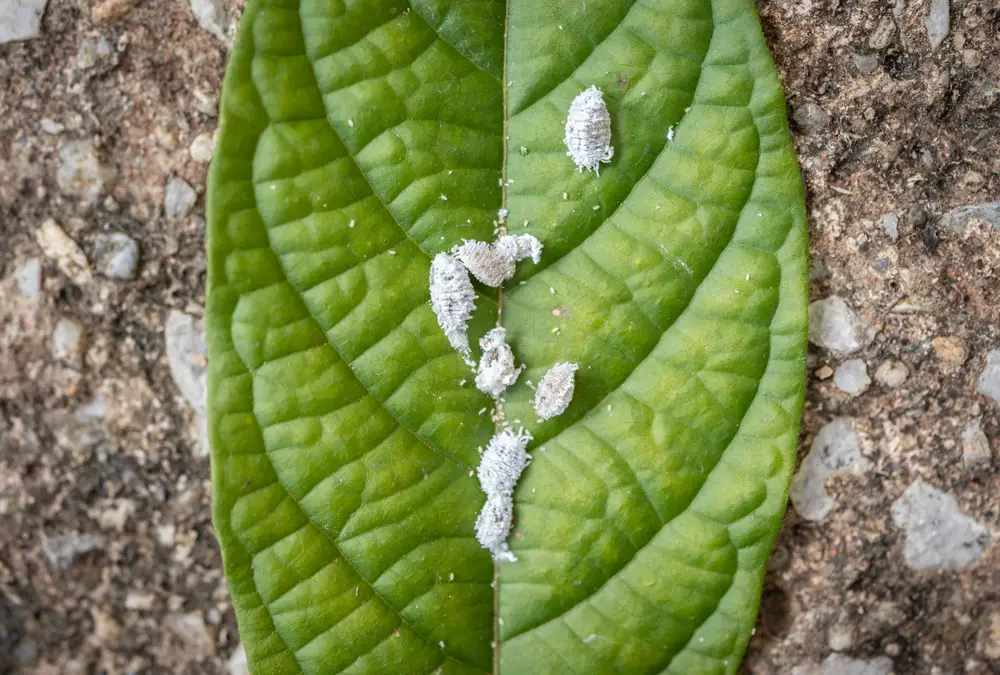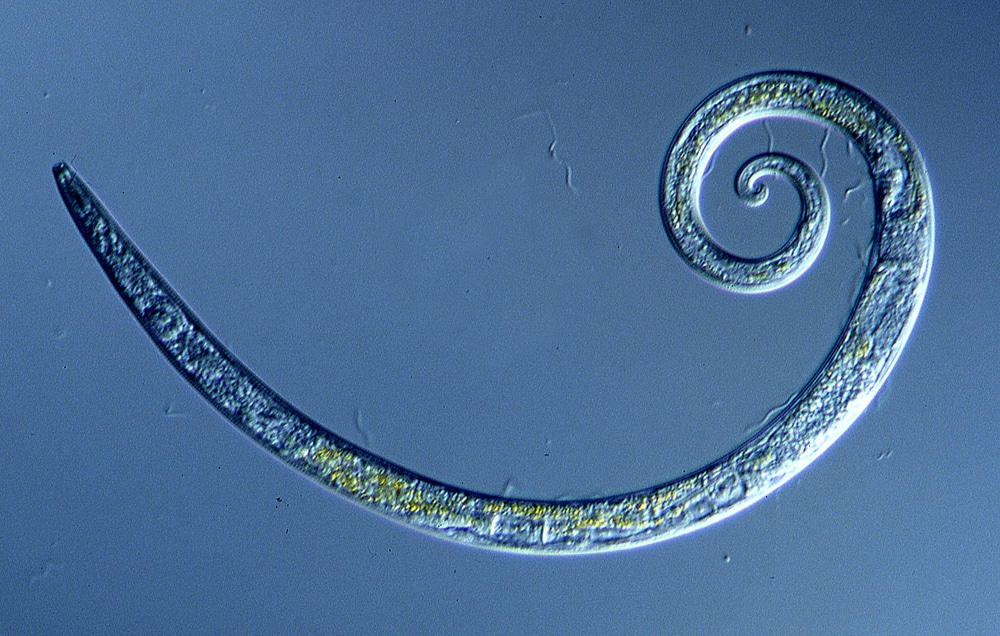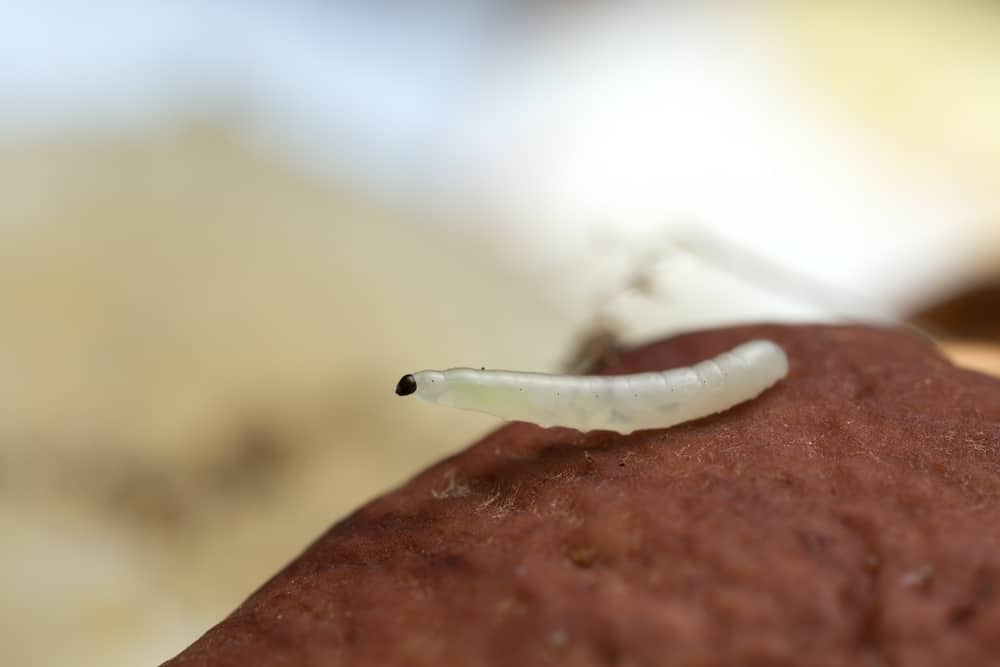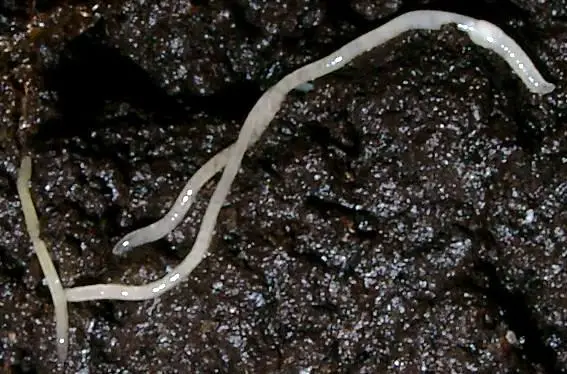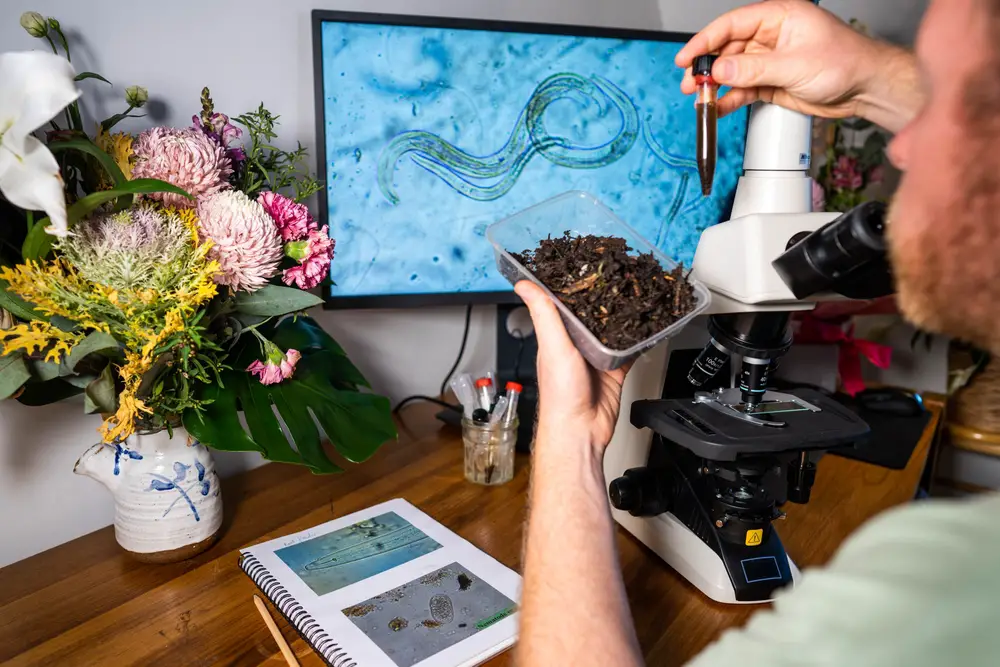Apples are notoriously difficult to cultivate naturally.
Many pests attack apples of all varieties, forcing farmers to rely on chemical fertilizers and pesticides since they are simple to apply.
Worm infestations are common on apple trees and can reduce fruit yield. The worms are produced mainly by the codling moth, which breeds at warm temperatures.
Organic worm prevention is straightforward with a few apple trees, but it takes some planning and effort. The most popular and effective way to grow organic apples without worms is to construct a barrier around the apple tree to prevent worms like codling Moths and Apple Maggots from getting to it.
These barriers are made of mesh and are impenetrable to worms.

They are put on fruit, whole branches, or entire trees and should be present from late May or early June through harvest in the fall.
Worms Found in Organic Apples?
The worms that attack apples are most likely codling moth larvae.
The codling moth is a widespread insect problem that prefers apples.
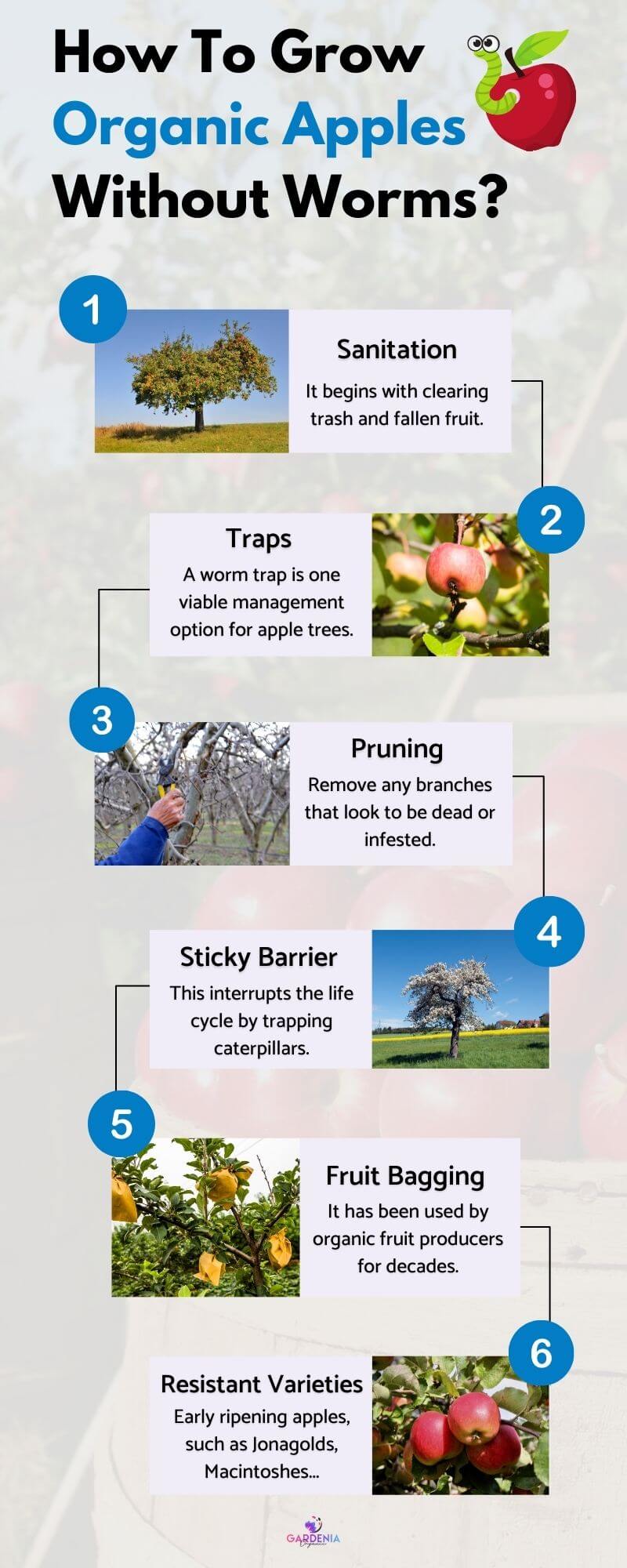
The devastation found within a ripe apple is frequently the first sign of a worm infestation:
- The larvae lay their eggs on the growing fruit and leaves of apples.
- After hatching, the juvenile caterpillars eat on the fruit’s surface for a while, then dig towards the interior.
- They eat for three weeks before tunneling out of the fruit and locating a suitable location to circle a cocoon.
- The worm-eating the fruit causes it to bruise, rot, and eventually drop to the ground.
The worm may no longer be present, but it has left behind an unappealing brown mass.
Preventing this invasion necessitates some understanding of the worm’s life cycle and behaviors.
Understanding the life cycle of the worms is therefore crucial to the effectiveness of early and consistent management strategies.
Key Takeaway: Non-chemical management measures can successfully prevent worm damage in many circumstances without the use of pesticides.
How to Control and Prevent Worms
Worms may be challenging to control, especially if the population has been allowed to grow throughout a season or two.
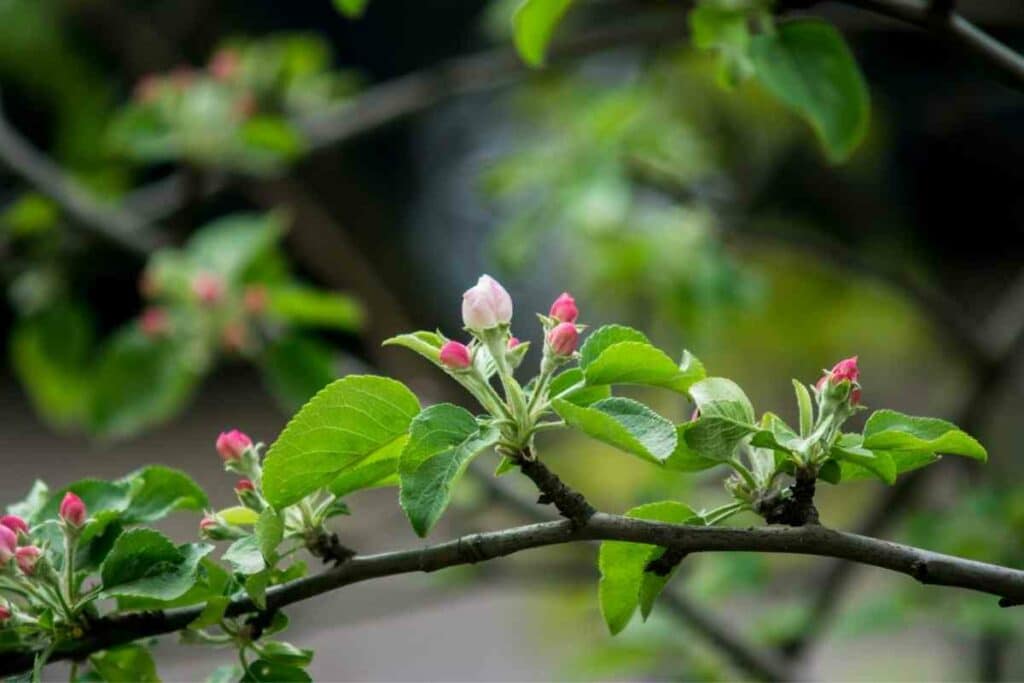
It is far easier to maintain worm populations low from the outset than repress an existing population.
Suppose an apple tree has a high worm population.
In that case, it may take several seasons of actively implementing these non-chemical management approaches to limit worm damage to 10 to 20% of afflicted fruit.
Begin adopting control measures as soon as the season begins.
Sanitation
Sanitation begins with clearing trash and fallen fruit that can offer shelter for codling moth pupa and host larvae.
Six to eight weeks after bloom, growing fruit should be monitored for stings, and contaminated fruit should be harvested and destroyed, particularly in May and June.
You should do this every one to two weeks to eliminate any worm-damaged fruit.
Remove any fruit with tiny holes caused by worms. Because composting does not eliminate all caterpillars, place the fruits in a plastic bag and discard them.
Make sure to pick up apples on a weekly basis because worms tend to travel quickly out of the fallen fruits.
Traps
A worm trap is one viable management option for apple trees.

These traps generate an odor that attracts moths, who subsequently become trapped in the trap.
Worm traps are available in many gardening catalogs. At best, the outcomes are irregular in terms of lowering the number of worms.
To utilize these traps, place a few throughout the yard and a couple in each tree. If you install the traps on apple trees, the moths will come directly to the trees and lay eggs before being ensnared.
When you scatter them over your garden, you should be able to catch the moths before they reach the apple trees.
Traps will cause significantly less damage while also capturing and reducing the quantity of egg-producing adults.
Best Results: They should be put in the canopy shortly after the trees have stopped blossoming. Place two traps per apple tree.
Thinning and Pruning
Thinning the fruit also aids since the worm prefers to penetrate areas where the fruit is in contact.
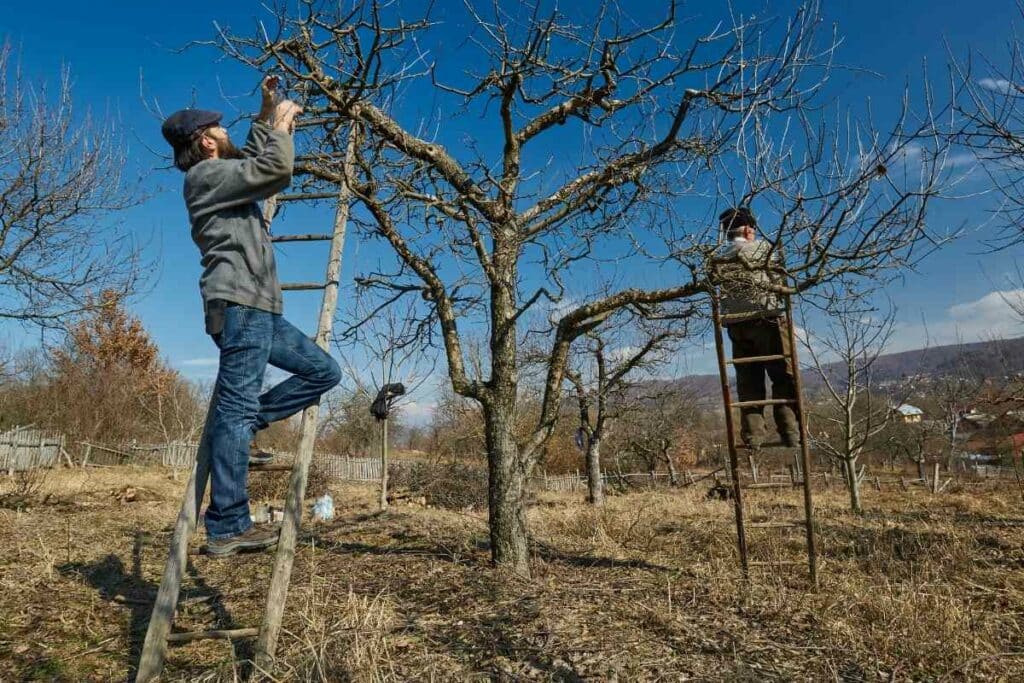
When the fruit is small, the size of a marble or broken should be removed first so that there is only one apple per fruit cluster to stimulate bigger fruit size and supply less suitable laying locations for worms.
Prune roughly 15 to 20% of the previous year’s growth. Pruning should be done when the tree is dormant in the winter.
Remove any branches that look to be dead or exhibit symptoms of illness or any infestation. Pruning allows light and air to enter the tree, reducing worm infection.
To promote non-chemical pest management, prune trees to a height where the canopy is easily accessible.
Sticky Barrier
Wrap tree trunks with a sticky barrier to prevent worms from descending the trunk; this interrupts the life cycle by trapping caterpillars as they look for a spot to pupate.
Caterpillars climbing to apple trees will become entangled in the sticky substance and perish.
These obstacles can prevent caterpillars from traveling to other trees or climbing back up the tree if they fall off.
Here is the process to follow:
- Use duct tape and a waterproof, adhesive substance like Tanglefoot or petroleum jelly to make barrier bands. Tree Tanglefoot is a non-toxic, sticky material that flightless moths become entangled in and are unable to pass through as they climb up the tree. Wear gloves when handling Tanglefoot because it is highly sticky and difficult to remove from the skin.
- Wrap duct tape around the tree, shiny side out, and push firmly into the bark crevices to prevent caterpillars from slipping under the bands once the bark is dry. Wrap the tape all around the tree trunk at chest height – approximately four feet above the ground – and wrap it a couple of inches wide.
- The duct tape is required to shield the tree bark from the sticky adhesive, which might disfigure or destroy the tree if applied directly. Smear the sticky substance down the middle of the band. Allow at least two inches of the uncoated band underneath the petroleum jelly if you choose to use it, as it can melt and drip downhill.
- Check the barrier bands on a regular basis to ensure they are not blocked with insects, dirt, or debris. More sticky substances can be applied as needed, especially after a downpour. After the caterpillars have pupated, you can remove the barrier bands in late July.
Fruit Bagging
Fruit bagging on trees is a method that has been used by organic fruit producers all over the world for decades.
When it comes to fruit bagging, apples are among the easiest of all. Bagging the thinned young fruit on the tree, in addition to cleanliness, can successfully preserve it from worms.
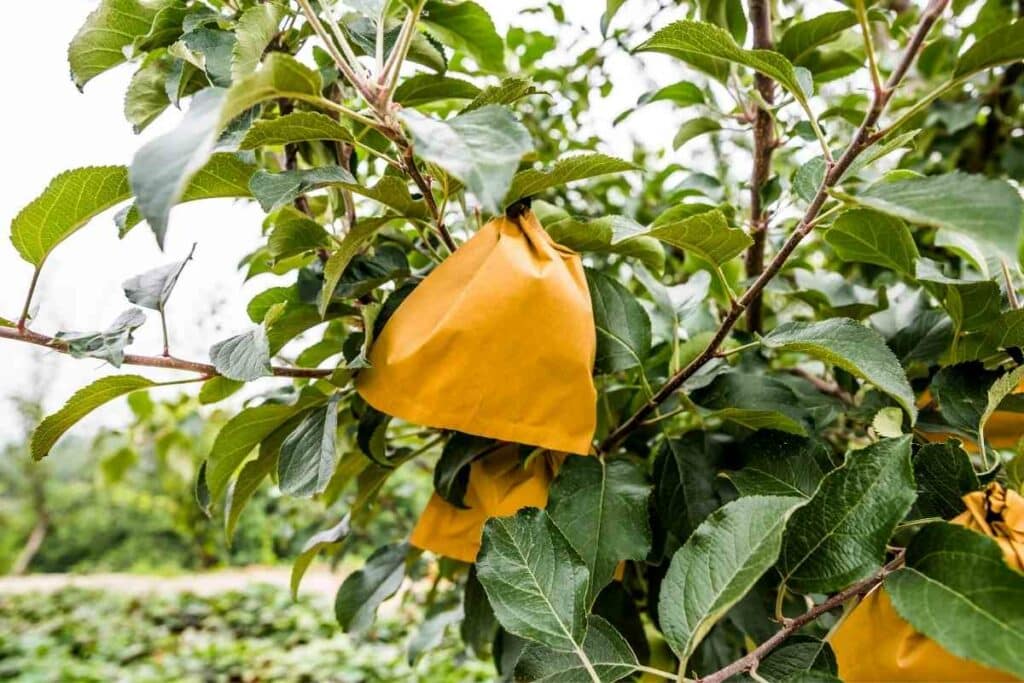
The concept is to keep common fruit tree pests like worms from harming growing fruits by covering plants with a protective barrier, such as a “bag” of some kind. Bagging on apple trees also deters many fungal diseases.
Purchase coverings to slip on each apple that will expand as the fruit matures yet have fine enough mesh to prevent worms from accessing the fruit; covered apples do not require insect spraying.
If you have a small to medium-sized tree that you can handle from the ground or a short ladder, bagging is simple.
If you have a tall tree, you may want to bag only the easiest apples and leave the fruits growing higher up to the worms.
Selecting Resistant Varieties
You should choose from varieties of apples that will reduce future worm issues if you are planting new trees.
Early ripening apples, such as Jonagolds, Macintoshes, Gravensteins, Red Delicious, and Galas, are less vulnerable to worms than late-maturing species.
Always Good Idea: It is beneficial to plant trees with semi-shallow rootstocks. The shorter trees will make controlling worms simpler.
Beneficial Predators
Nematodes are worm-like parasites that aggressively search, penetrate, and kill the pest’s pupal stage.
Ladybugs and Lacewings prey on the eggs and larvae. Parasitic wasps have the ability to attack the worm itself.
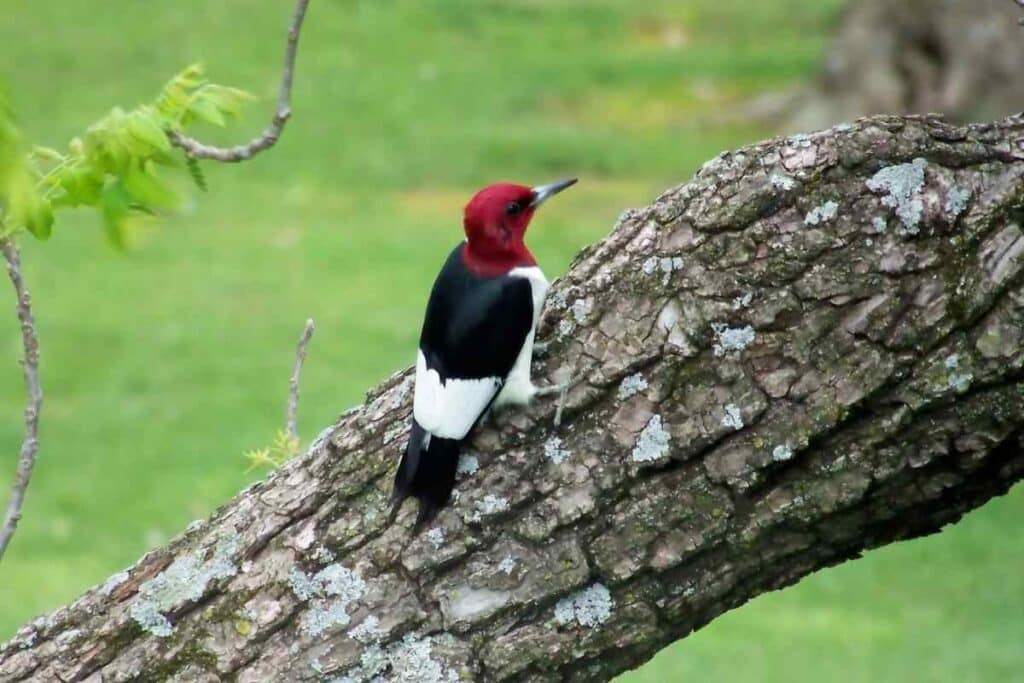
Adult moths can be killed by praying mantises before they deposit their eggs.
Woodpeckers have been recorded consuming large quantities of moth larvae.
These birds prey on caterpillars after they depart from the fruit toward late summer and in the fall, while the larvae are cocooned on the tree’s trunk.
Nuthatches and creepers are also prominent worm predators.
Final Thoughts
Apple trees are more vulnerable to pest infestation than any other crop.
Without appropriate pest management, the worst of these worms may be disastrous to the fruit, the grower’s morale, and the financial line.
To grow organic apples without worms, you should choose types of apple trees that are more resistant to harm, such as early ripening apples.
Clean beneath apple trees regularly to limit disease spread and eliminate worm hiding spots.
Please do not place the gathered garbage near the tree, but rather remove it totally from the area.
Fruit removal and thinning will help prevent the larvae from spreading to uninfected fruits.

